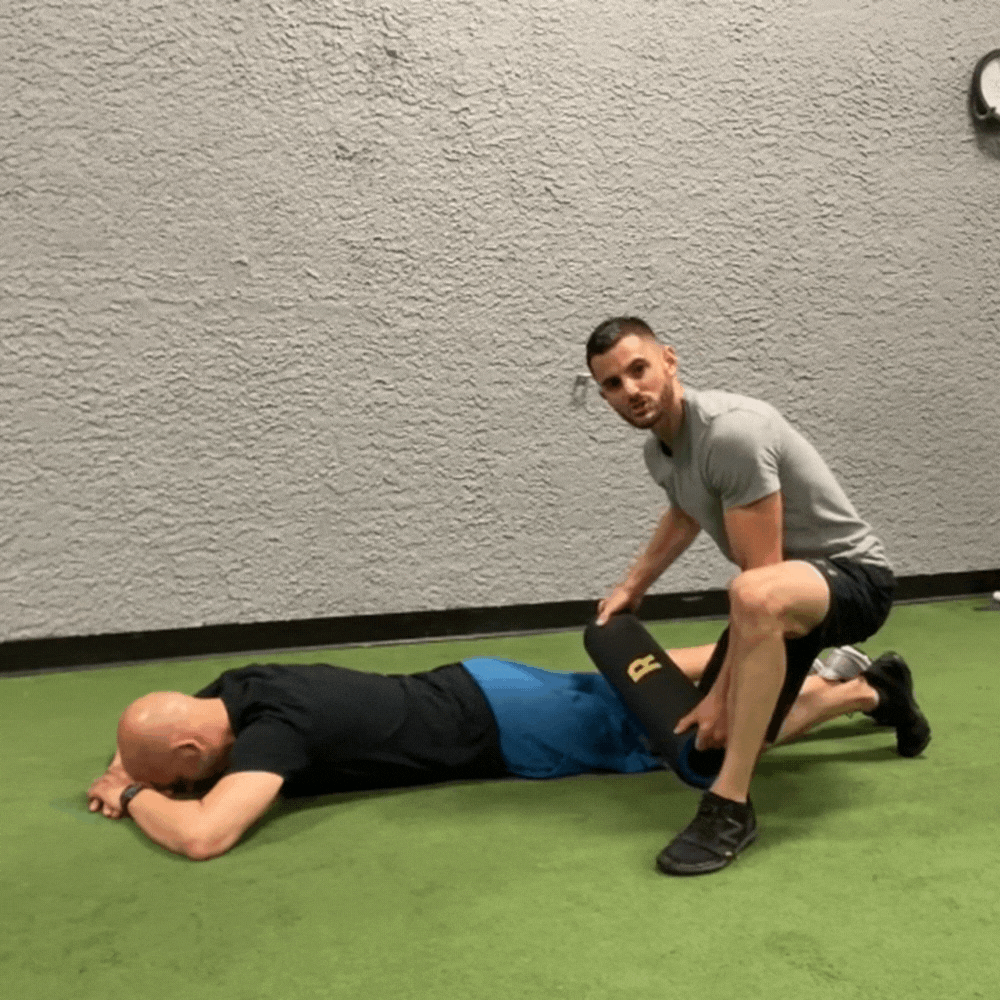Are you looking to take your strength and mobility to the next level? Look no further than the power of body tempering. This revolutionary technique has been sweeping the fitness world, transforming athletes and individuals alike.
Body tempering involves using heavy, rounded metal tools to apply pressure and compression to specific muscle groups. By rolling these tools over your body, you can effectively break up scar tissue, release muscle tension, and improve overall mobility. The results? Increased flexibility, enhanced range of motion, and reduced risk of injury.
But body tempering is not just for professional athletes. Whether you're an aspiring bodybuilder, a dedicated weightlifter, or simply someone looking to move and feel better in their everyday life, body tempering can benefit anyone who wants to optimize their physical performance.
In this article, we'll dive deeper into body tempering and how it can unleash your true strength and mobility potential. We'll explore the science behind this technique, highlight its benefits, and provide practical tips and resources to get started. Get ready to unleash the power of body tempering and take your fitness journey to new heights.
What is body tempering?
Body tempering is a technique that involves using heavy metal tools to apply pressure and compression to specific muscle groups. These tools, often cylindrical in shape, are typically made of steel and come in various sizes and weights. The practitioner rolls these tools over their body, targeting areas of tension, scar tissue, and restricted mobility.
The principle behind body tempering is similar to foam rolling or self-myofascial release, but with a twist. The use of heavy metal tools allows for greater pressure and targeted compression, resulting in deeper tissue penetration and more effective muscle release. This technique can be used on various muscle groups, including the back, legs, arms, and shoulders.
Benefits of body tempering
Body tempering offers a wide range of benefits for individuals of all fitness levels. Here are some of the key advantages of incorporating body tempering into your training routine:
1. Increased flexibility and range of motion: By breaking up scar tissue and releasing muscle tension, body tempering helps improve flexibility and range of motion. This can be especially beneficial for athletes and fitness enthusiasts who need to perform dynamic movements that require a wide range of motion.
2. Enhanced recovery: Body tempering promotes blood flow and lymphatic drainage, which aids in the removal of metabolic waste and toxins from the muscles. This accelerated recovery process can help reduce muscle soreness and speed up the healing of soft tissue injuries.
3. Injury prevention: Regular body tempering can help identify and address imbalances or restrictions in the muscles, reducing the risk of overuse injuries. By improving muscle elasticity and mobility, body tempering helps create a more resilient body that is less prone to injuries.
4. Improved performance: By increasing flexibility, range of motion, and muscle elasticity, body tempering can enhance athletic performance. Whether you're a weightlifter, a runner, or a martial artist, improved strength and mobility can translate into better overall performance in your chosen sport or activity.
How body tempering improves strength and mobility
Body tempering is a powerful tool for improving both strength and mobility. Here's how it works:
1. Breaking up scar tissue: Over time, repeated stress and strain on the muscles can lead to the formation of scar tissue. This scar tissue can limit mobility and reduce muscle function. Body tempering helps break up these adhesions, restoring proper muscle function and improving mobility.
2. Releasing muscle tension: Muscle tension is a common issue that can result from poor posture, repetitive movements, or intense workouts. Body tempering helps release muscle tension by applying pressure and compression, allowing the muscles to relax and return to their optimal length.
3. Increasing muscle elasticity: Body tempering promotes the development of muscle elasticity, which is crucial for strength and mobility. Elastic muscles can generate more force and absorb more energy, allowing for greater power output and reduced risk of injury.
4. Activating the nervous system: Body tempering stimulates the nervous system, increasing neural drive to the muscles. This enhanced neural connection can lead to improved strength and control over movements, allowing for more efficient and powerful performance.
Body tempering equipment and tools
To practice body tempering, you'll need the right equipment and tools. Here are some of the essentials:
1. Body tempering rollers: These heavy, rounded metal tools are the heart of body tempering. They come in various sizes and weights to target different muscle groups.
2. Supportive padding: Depending on the area you're targeting, you may need additional padding to support your body during body tempering. This can include yoga mats, foam pads, or even pillows to provide cushioning and stability.
3. Accessories: While not essential, some practitioners find additional accessories helpful for body tempering, such as straps or handles to assist with grip and control.
Body tempering techniques for specific muscle groups
Body tempering can be applied to various muscle groups, offering targeted benefits and improvements. Here are some common body tempering techniques for specific areas of the body:
1. Back and shoulders: To target the back and shoulders, lie on your back and roll the body tempering roller along the length of your spine. You can also target specific areas of tension or restricted mobility by focusing on those areas with slower, more focused movements.
2. Legs and hips: For the legs and hips, you can use body tempering rollers to roll along the muscles of the thighs, calves, and glutes. Be sure to apply steady pressure and focus on any areas of tension or discomfort.
3. Arms and forearms: To address tension and restrictions in the arms and forearms, use the body tempering roller to roll along the muscles, applying pressure as needed. This can be especially beneficial for individuals who perform repetitive arm movements, such as weightlifters or tennis players.
SEE BODY TEMPERING TECHNIQUES FOR EVERY BODY PART
Body tempering vs. traditional strength training
While body tempering shares some similarities with traditional strength training techniques, it offers unique benefits that set it apart. Here's how body tempering compares to traditional strength training:
1. Targeted muscle release: Body tempering allows for targeted muscle release, focusing on specific areas of tension and restricted mobility. Traditional strength training, on the other hand, primarily focuses on muscle activation and strengthening.
2. Increased range of motion: Body tempering helps improve flexibility and range of motion, making it a valuable tool for athletes and individuals who need to move through a wide range of motions. Traditional strength training may not directly address these aspects of mobility.
3. Injury prevention and rehabilitation: Body tempering can be particularly effective for injury prevention and rehabilitation. By releasing muscle tension and improving mobility, it helps create a more resilient body that is less prone to injuries. Traditional strength training, while beneficial for overall strength and muscle development, may not provide the same injury prevention benefits.
Incorporating body tempering into your fitness routine
Ready to incorporate body tempering into your fitness routine? Here are some practical tips to get started:
1. Start slowly: If you're new to body tempering, start with lighter tools and gentle pressure to allow your body to adapt. Gradually increase the weight and pressure as your body becomes more accustomed to the technique.
2. Focus on technique: Proper technique is crucial for effective body tempering. Take the time to learn the correct rolling motions and apply steady pressure to the targeted muscle groups. If you're unsure, consider seeking guidance from a qualified trainer or therapist.
3. Listen to your body: Pay attention to how your body responds to body tempering. While some discomfort is normal, avoid excessive pain or discomfort. If something doesn't feel right, adjust your technique or seek professional advice.
4. Supplement with other training methods: Body tempering can be a valuable addition to your training routine, but it should not replace other important training methods such as strength training, cardiovascular exercise, and mobility work. Use body tempering as a complementary tool to enhance your overall fitness and performance.
Body tempering for injury prevention and rehabilitation
In addition to its performance-enhancing benefits, body tempering can also be a valuable tool for injury prevention and rehabilitation. Here's how body tempering can help:
1. Pre-workout preparation: Using body tempering techniques before a workout can help warm up the muscles, increase blood flow, and prepare the body for intense activity. This can reduce the risk of injuries caused by cold muscles or inadequate warm-up.
2. Post-workout recovery: After a workout, body tempering can aid in the recovery process by promoting blood flow, reducing muscle soreness, and accelerating the removal of metabolic waste. This can help speed up recovery and reduce the risk of overuse injuries.
3. Rehabilitation: For individuals recovering from injuries, body tempering can be an effective tool to aid in the rehabilitation process. By targeting specific areas of tension or restricted mobility, body tempering can help release scar tissue, improve range of motion, and restore muscle function.
Body tempering success stories and testimonials
Don't just take our word for it. Many athletes and fitness enthusiasts have experienced the transformative power of body tempering. Here are a few success stories and testimonials:
1. John, a professional weightlifter: "Since incorporating body tempering into my training routine, I've noticed a significant improvement in my flexibility and mobility. I feel more stable and powerful during my lifts, and my risk of injury has decreased. Body tempering has become an essential part of my training."
2. Sarah, a recreational runner: "As a recreational runner, I struggled with tight hips and limited range of motion. After starting body tempering, I've seen a remarkable improvement in my flexibility and running performance. My hips feel looser, and I've been able to run longer distances without discomfort. Body tempering has been a game-changer for me."
3. Mike, a martial artist: "As a martial artist, mobility and strength are critical for my performance. Body tempering has helped me unlock new levels of flexibility and power. I feel more fluid in my movements, and my strikes have become more explosive. I highly recommend body tempering to anyone looking to enhance their martial arts practice."
Conclusion: Embracing the power of body tempering
Body tempering is a powerful technique that can unleash your true strength and mobility potential. Whether you're an athlete, a fitness enthusiast, or someone looking to move and feel better in their everyday life, body tempering offers numerous benefits. From increased flexibility and range of motion to improved injury prevention and rehabilitation, body tempering can transform your fitness journey.
So, why wait? Embrace the power of body tempering and take your strength and mobility to new heights. Start incorporating this revolutionary technique into your training routine and experience the transformative effects for yourself. Unleash your true potential with body tempering and unlock a whole new level of physical performance.


Leave a comment
This site is protected by hCaptcha and the hCaptcha Privacy Policy and Terms of Service apply.